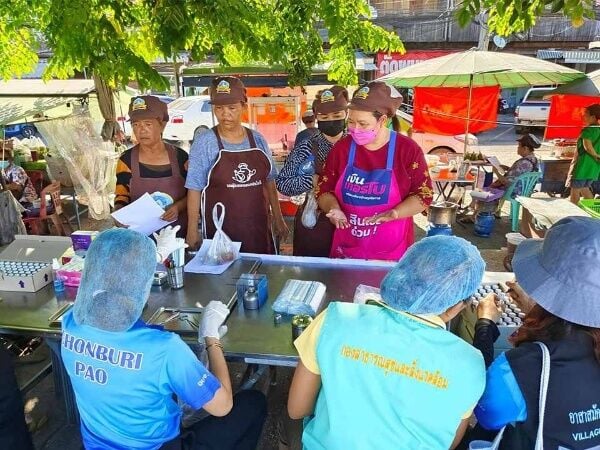Public Health Department inspects food safety at Pattaya market

To safeguard public health, officials from the Public Health Department conducted a meticulous food sanitation inspection on Rong Po Market, North Pattaya, last week.
Banglamung authorities left no stone unturned on Friday, June 21, as they scrutinised every vendor, distributing informative leaflets detailing the rigorous assessment criteria.
Every vendor at Rong Po Market faced a stringent evaluation across three critical areas: location, food quality, and equipment standards. The location checks were particularly tough, with vendors required to hold valid permits and maintain clean, durable stalls.
These stalls, along with vehicles and selling areas, had to be able to be cleaned easily and at least 60 centimetres above the ground. Officials also enforced strict regulations on lighting and the use of equipment to cover food, ensuring it remained uncontaminated.
Food and equipment standards were under the microscope, with officials assessing the quality and safety of both fresh and dry foods. Vendors had to store these items at appropriate temperatures and follow detailed sanitation guidelines.
Seasonings and additives needed to be pristine, while the use of separate equipment for raw and cooked foods was mandatory. Clean water storage for cooking was another non-negotiable requirement.
This comprehensive annual assessment is vital in maintaining high food sanitation standards throughout the year. Officials didn’t just inspect; they also provided guidance and recommendations for vendors falling short of these stringent standards, reported Pattaya Mail.
In related news, Bangkok City Hall is set to implement stringent measures aimed at regulating street vendors, targeting their income, enforcing tax compliance, and ultimately eliminating hawking on pavements. Bangkok Governor Chadchart Sittipunt announced these measures following a meeting focused on enhancing the orderliness of the city’s surroundings.
In other news, Thailand’s food safety protocols are on the rise following successful efforts to ban harmful herbicides and pesticides such as paraquat and chlorpyrifos, alongside triumphant attempts to limit glyphosate use, as discussed at a recent seminar.
Latest Thailand News
Follow The Thaiger on Google News:


























